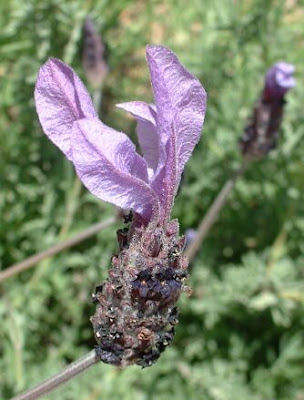Today's name: Lavender
Pronunciation: LAV-en-der
Potential nicknames: Lavie, Andie, Enna
Origin: From the Latin lavandula/lavendula, a flowering plant in the mint family that blooms in shades of blue and lilac. The ancient Greeks called lavender nardus after the Syrian city of Naarda. The late Latin name meant "to wash," presumably because lavender was used to dye and scent fabric.
Popularity: Lavender joined other popular flower names of the 18th century and was used on both boys and girls, although it has never been as popular as Lily, Rose and Violet, especially in recent years. It is worth noting that during the flower-name-rage in the 18th century, every flower had a meaning, and lavender symbolized distrust. In 2010 there were only 23 baby girls named Lavender. In 2011 there were 34.
Fun fact: (1) During Roman times lavender was an occupational name for a washer-woman, presumably because lavendula meant "to wash." (2) The genus of lavender includes annuals, herbs, and small shrubs. It blooms in shades of lilac and periwinkle blue. The color lavender comes from the color of these plants. (3) Lavender is often found to have a relaxing scent, and is therefore used in aromatherapy, essential oils, and mineral baths, among other things. This goes back to Roman times when lavender was extremely expensive, used in bathwater to improve and scent the skin. (4) Culinary enthusiasts might recognize lavender being used in herbs de Provence. (5) Lavender was used as a holy herb in the biblical Temple and mentioned in the Song of Solomon along with other herbs. (6) Lavender Brown is a character in the Harry Potter series, and also a character in "Matilda" by Roald Dahl. (7) Lavender has also been used as an English surname.
.

Ember? Ava? Avis? Lenny? Either way, Lavender is one of those beautiful names that it seems a shame to shorten.
ReplyDelete